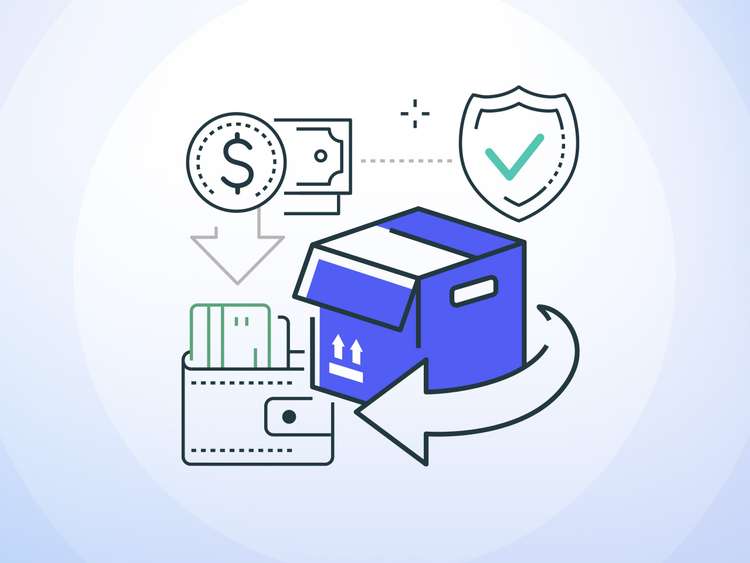The importance of efficient return policies and streamlined shipping processes cannot be understated. As businesses vie for customer loyalty and satisfaction, the ease and transparency of return procedures often play a major role in determining a company’s success. Studies from invespcro reveal that approximately 92% of consumers state they will buy again if the product return process is easy, while nearly 67% of shoppers check the return policy before making a purchase. Clearly, an effective return policy is not just a logistical consideration, but also a powerful tool for fostering trust and ensuring repeat business.
This article offers best practices for efficient handling of returns. Our exploration will not only emphasize the significance of transparent policies, but also discuss how businesses can optimize their return shipping processes to ensure customer satisfaction. A well-crafted and efficiently executed return policy can be a game-changer in a company’s relationship with its customers.
The Link Between Return Policies, Shipping, and Customer Trust

Transparent return policies, wherein terms and conditions are clearly articulated and devoid of hidden clauses, instill confidence in consumers, assuring them that their interests are safeguarded. Such policies are more than just logistical mandates; they symbolize a company’s commitment to customer satisfaction, whether they are shipping to USA from Canada or domestically. When a consumer undergoes a seamless return experience, it not only reinforces their loyalty, but often leads to positive word-of-mouth referrals. A well-managed return process can transform a potentially negative experience into a positive narrative, turning customers into brand ambassadors.
The True Cost of Returns

Direct Costs of Returns
Shipping, restocking, and repackaging products constitute the direct expenses companies face when managing returns. These tangible costs can quickly add up, especially for businesses with high return rates, making it essential for companies to streamline and reduce these expenses wherever possible.
Indirect Costs and Their Implications
A cumbersome return process may deter customers from making repeat purchases. Mishandled returns can damage customer goodwill, which damages brand reputation and stunts long-term success.
Mitigating Costs Through Efficient Return Handling
By ensuring a smooth and hassle-free return process, businesses not only save on immediate expenses but also foster customer trust, which can lead to increased loyalty and repeat business in the long run.
Best Practices for Crafting an Efficient Return Policy

Clarity and Simplicity in Return Policies
Customers should be able to quickly grasp what is required of them and what they can expect from the business. Complexity or ambiguity can deter customers and lead to misunderstandings.
The Essence of Fairness
A fair return policy strikes a balance between customer convenience and the viability of the business. Create a policy that respects the rights and expectations of customers while ensuring that the business remains sustainable and profitable.
Accessibility of the Return Policy
The policy should be prominently displayed on the website, preferably in multiple locations, such as product pages, checkout, and the footer. An easily accessible policy can prevent future disputes and increase customer confidence.
Determining the Right Time Frame
While a longer duration may attract customers, businesses need to ensure it’s feasible on their end. The timeframe should reflect the nature of the product and industry standards while being clearly communicated to customers.
Detailing the Return Procedures
To ensure customer confidence and ease, businesses should provide a detailed, step-by-step guide on how to initiate and complete returns. Such guides can reduce the number of customer service queries and prevent potential mistakes or misunderstandings during the return process.
Streamlining the Return Shipping Process

Prepaid Return Labels: Weighing the Options
Offering prepaid return labels can elevate the customer experience by reducing their efforts in the return process. While this gesture can enhance convenience, it’s important to monitor its impact on return rates and profitability.
Leveraging Return Logistics Partners
By collaborating with third-party logistics providers, companies can streamline the return process and potentially reduce costs. These partners offer expertise and resources that individual businesses might not possess, ensuring efficient handling and timely processing of returned goods.
The Advantages of Centralized Return Centers
Having a dedicated space or facility for returns can improve the efficiency and management of the return process. Centralized return centers allow businesses to better handle, inspect, and restock products, ultimately speeding up the entire process and ensuring customer refunds or exchanges are processed swiftly.
Leveraging Data to Improve Return Processes
By meticulously tracking return rates and the underlying reasons, businesses can garner invaluable insights that could guide product enhancements and reduce the frequency of returns. Soliciting and heeding customer feedback can offer a direct line into understanding pain points and areas of improvement within the return process. Marrying this with the power of predictive analytics, companies can forecast potential return rates, allowing them to proactively address issues and allocate resources effectively, ensuring that returns are handled efficiently and to the satisfaction of the customer.
Educating and Engaging Customers

Communication
From the moment of purchase to post-purchase interactions, businesses should be transparent and proactive, ensuring that customers understand the return policy in its entirety. This clarity can preemptively address potential concerns and set clear guidelines for customers to follow.
Customer Service Training
As the front line of communication, well-trained customer service teams can swiftly and effectively address return-related queries, enhancing the overall customer experience. By ensuring that these teams have deep knowledge of the return policy and processes, businesses can ensure consistent and accurate information dissemination.
Online Resources
An FAQ section dedicated to returns, engaging video tutorials, and detailed step-by-step guides not only enhance user experiences, but also reduces the load on customer service teams by preemptively addressing common queries.
An effective and transparent return policy serves as a cornerstone for customer trust and loyalty. By embracing best practices and continuously refining return processes based on data and customer feedback, companies can transform potential challenges into opportunities for enhanced customer satisfaction. Ultimately, a well-orchestrated return strategy not only bolsters the bottom line, but also fortifies a brand’s reputation in the eyes of its consumers.





